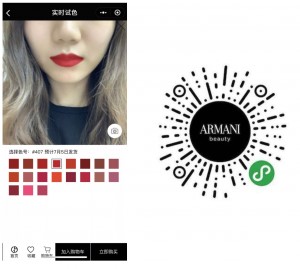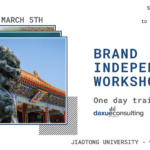How to build a mass brand in China’s consumer goods market?
China’s consumer goods market is now the world’s largest, how brands get a slice of the pie
By the end of 2019, China’s consumer goods market will be the largest in the world. According to the latest forecast by New York-based research company eMarketer, the market will be worth $5,074 trillion ($100 billion more than the expected value for the US). For many companies, succeeding China has become the number one priority, but not all top brands have prevailed. For example, Marks & Spencer, a major British multinational retailer specialized in selling high-quality clothing, fully exited Mainland China at the end of 2017. After nine years of operations, the company left behind a women’s wear market worth $140 billion. Other global brands, such as Adidas and L’Oréal, became market leaders, although China is culturally very distant from their home playground in Europe. What is the secret recipe to build mass brands in China and how is the strategy of consumer goods companies changing at this juncture? The article explores the evolution of winning strategies from expanding distribution to creating a perfect brand experience.
Expanding physical access in China’s consumer goods market
The strategy for building a mass brand in China can be summarized simply as “be where the customers are”. Focusing on any particular segment or channel would not bring enough leverage to reach the #1 position. Thus, global players have been broadly targeting in all channels the rising Chinese middle class, which could engage with branded products. The estimated size of this group ranges from 10 to 30% of the population, depending on the source and definition used. Serving this market starts by knowing where the customers live and how they buy products. The physical location of the target group is not a trivial question for building a mass brand in China. Cities are divided into tiers such as major municipalities, provincial capitals, prefecture cities, county cities, districts. The middle class is spread-out across all city tiers but in different proportions. China is still mostly a retail market, with 70% of the volume sold offline. Thus, accessing customers requires a presence in all city tiers through own stores or third-party retailers such as RT-Mart, Vanguard Group, Watson. For example, Adidas has built a network of 12,000 stores covering 1,200 cities in its race with Nike for dominance over the Chinese sportswear market.

[https://footwearnews.com “A look inside an Adidas store in China”]
However, customers in lower city tiers are more price-sensitive and can engage only with a subset of the entire Adidas product range. The company has adjusted its offer to those needs while expanding its distribution. This strategy enabled Adidas to reach a #1 position with a nearly 20% market share and revenue exceeding $4 billion in Greater China in 2018. The company announced plans to continue its expansion by adding 1,000 new stores per year.
How mass brands in China win e-commerce
Building a mass brand in China also requires a strong e-commerce presence as this channel accounts for 30% of China’s consumer goods market. Two giants dominated this space: Alibaba owning Tmall and Tencent controlling WeChat and JD.com. The market share of Tmall and JD.com amounts to ca. 60% and 25%, respectively, so almost all major consumer goods brands in China have developed stores on those platforms. Three Squirrels is an iconic example of great online success in China built on Tmall. Founded in 2012 by Zhang Liaoyuan, the company is a leading snack brand, which achieved $1.5 billion in sales in 2018 through selling nuts, seeds, and dried fruits. Instead of building a vast multichannel distribution first, the company started with an unprecedented focus on the customer experience, interacting and transacting primarily online. From the very beginning, the Three Squirrels goal was to become the leading e-commerce nut brand in China. Currently, the majority of its sales come from Tmall (64%). Three Squirrels branding leverages the Meng culture, which originated in Japan and has spread very fast through animation on the Chinese internet.

[www.equalocean.com “Three Squirrels’ 3D animation”]
The brand created a social media world of its own with three Meng squirrel characters interacting with customers online. The Three Squirrels has been very successful on Tmall so far. However, this marketplace has become a competitive and costly place to grow sales due to fees, price competition, and deep discounting (11.11 day).

[www.news.abs-cbn.com “A screen shows the value of goods being transacted at Alibaba Group’s 11.11 Singles’ Day global shopping festival in Shanghai, China, Nov. 12, 2018. The most significant day for China’s consumer goods market]
As a result, major brands in China decided to develop their own e-commerce by immersing customers in a distinct online brand world, instead of focusing only on discounts and promotions. Own e-commerce accounts for a small fraction of sales for most mass brands. However, this new channel is growing rapidly and is of strategic importance. By controlling the customer journey end to end, brands can collect data on customers to personalize their journey and develop new products. China could potentially become the World’s leading playground for digitally native brands. E-commerce is widely spread, particularly on mobile devices. Social media are very popular as the number of users on WeChat and Weibo has reached 1 billion and 500 million, respectively – a vast market for any consumer goods brand.
Create an omnichannel experience
Leading brands in China’s consumer goods market are merging offline and online into a continuous experience across any location or device. This merge of channels starts with practical solutions such as ordering online with pickup in-store, returns in-store of products bought online, checking product availability in-store. Three Squirrels mastered the online first and is now expanding the brand experience to offline (from clicks to bricks). To support the brand image, the company opened 45 “Feeding Stores” and the number is expected to rise to 150 by the end of 2019.

[www.bakeryandsnacks.com “Three Squirrel store in Suzhou City”]
The primary purpose of those stores is to introduce the brand by immersing customers into an imaginary Meng world with pines, squirrels, and Meng characters anywhere in the store. Many brands are also experimenting with VR and AI to enhance the customer experience further. For example, in 2019, Giorgio Armani brand launched on WeChat a VR app, which enables customers to try different makeup shades through a mobile phone.

[www.jingdaily.com “Armani brand VR tool on WeChat”]
Consumer segmentation in China and the dimensions to consider
So far, rapid expansion of the distribution channels to reach the rising middle class, specifically in lower tier cities, has been a successful strategy for building mass brands in China. However, the business environment is changing. A substantial part of the lower middle class is expected to upgrade to a higher level of income. According to McKinsey& Company, the population of the upper-middle class will rise at a compound annual growth rate of 28 percent from 2018 to 2025, taking the total number of people in China earning between $2,600 and $3,900 per month per household to 350 million. The center of gravity of the markets is shifting towards the upper mass segment. Customers will be looking for a great experience and high-end brands more often than in the past. For some brands, adding thousands of stores in just a few years meant to compromise on staff training, standards, and format management. Any lacunas with this regard would have to be corrected to serve a more affluent customer. Also, by broadly targeting the middle class, many companies failed to adequately address primary segments such as kids, men, and women. To adjust, consumer goods companies are unlocking powerful insights from advanced data analytics. In 2017, Alibaba launched The Tmall Innovation Center (TMIC). The new center will use data on more than 600 million buyers to help brands in designing their offer. In 2019, Shiseido opened an office near Alibaba’s global headquarters in Hangzhou to deepen collaboration with Alibaba Group in co-creating products tailored explicitly for Chinese consumers.
Going from mass access to brand experience in China
Major consumer goods companies were rushing over the last decade to become market leaders in China as fast as possible. By pushing marketing investments, expanding distribution in all city tiers and on crucial e-commerce platforms, some foreign brands succeeded, while others fell behind or exited the market. There will be no revolution in this strategy, but some new trends need to be factored in the plans. The center of gravity on the market is shifting visibly towards the upper-middle class with more sophisticated needs. Any corners cut while expanding vast distribution in light speed should be revisited. Also, brands should create a refined experience for each customer segment. At first glance, winning in China might look like a sequential game whereby the first round was about building broad access to products. However, we see some brands succeeding through an insane focus on customer experience and online interactions without a mass physical distribution. In the future, we will see more companies operating in this model, possibly through their own e-commerce platforms, as China is becoming arguably the most sophisticated digital ecosystem in the World.
Author: Piotr Furmanski, CFA, Commercial Transformation Director for APAC at Avon
Improve your China knowledge scope and leverage China Paradigm for your business
Listen in China Paradigm in iTunes
















